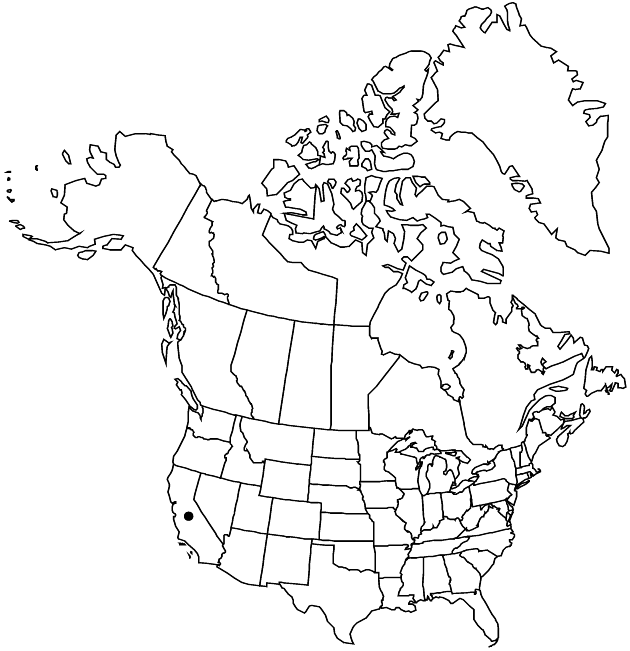Difference between revisions of "Erigeron robustior"
Sida 21: 21. 2004.
FNA>Volume Importer |
imported>Volume Importer |
||
| (5 intermediate revisions by 2 users not shown) | |||
| Line 8: | Line 8: | ||
}} | }} | ||
|common_names=White cushion fleabane | |common_names=White cushion fleabane | ||
| − | |basionyms={{Treatment/ID/ | + | |special_status={{Treatment/ID/Special_status |
| + | |code=E | ||
| + | |label=Endemic | ||
| + | }} | ||
| + | |basionyms={{Treatment/ID/Basionym | ||
|name=Erigeron decumbens subsp. robustior | |name=Erigeron decumbens subsp. robustior | ||
|authority=Cronquist | |authority=Cronquist | ||
| + | |rank=subspecies | ||
| + | |publication_title=Brittonia | ||
| + | |publication_place=6: 174. 1947 | ||
}} | }} | ||
|synonyms={{Treatment/ID/Synonym | |synonyms={{Treatment/ID/Synonym | ||
|name=Erigeron decumbens var. robustior | |name=Erigeron decumbens var. robustior | ||
|authority=(Cronquist) Cronquist | |authority=(Cronquist) Cronquist | ||
| + | |rank=variety | ||
}} | }} | ||
|hierarchy=Asteraceae;Asteraceae tribe Astereae;Erigeron;Erigeron robustior | |hierarchy=Asteraceae;Asteraceae tribe Astereae;Erigeron;Erigeron robustior | ||
| Line 38: | Line 46: | ||
-->{{#Taxon: | -->{{#Taxon: | ||
name=Erigeron robustior | name=Erigeron robustior | ||
| − | |||
|authority=(Cronquist) G. L. Nesom | |authority=(Cronquist) G. L. Nesom | ||
|rank=species | |rank=species | ||
| Line 52: | Line 59: | ||
|publication title=Sida | |publication title=Sida | ||
|publication year=2004 | |publication year=2004 | ||
| − | |special status= | + | |special status=Endemic |
| − | |source xml=https:// | + | |source xml=https://bitbucket.org/aafc-mbb/fna-data-curation/src/2e0870ddd59836b60bcf96646a41e87ea5a5943a/coarse_grained_fna_xml/V19-20-21/V20_566.xml |
|tribe=Asteraceae tribe Astereae | |tribe=Asteraceae tribe Astereae | ||
|genus=Erigeron | |genus=Erigeron | ||
Latest revision as of 20:04, 5 November 2020
Perennials, (15–)25–55 cm (not colonial); taprooted, taproots thin (2–3 mm wide), caudices simple or with relatively slender and short, erect branches. Stems (often purplish) erect or decumbent, sparsely strigillose (basal cells inclined, hairs even-width), eglandular. Leaves basal (often withering by flowering) and cauline; basal blades (3-nerved) linear to narrowly oblanceolate, 90–170 × 3–7 mm, cauline gradually reduced distally, ending proximal to heads, margins entire, faces strigoso-hirsute, eglandular. Heads 1–3. Involucres 6–8.5 × (12–)14–20 mm. Phyllaries in 2–3(–4) series (narrowly oblanceolate to lanceolate, acute-acuminate), sparsely to moderately hirsute to villous, eglandular. Ray florets 21–36; corollas 7–15(–19) mm, laminae white to pinkish, not coiling or reflexing. Disc corollas 3.5–4.5 mm. Cypselae (1.8–)2–3.2 mm, 2-nerved, faces sparsely strigose; pappi: outer of setae, inner of 15–22 bristles.
Phenology: Flowering Jun–Jul.
Habitat: Rocky or gravelly slopes, sometimes over serpentine, glades and meadows, seeps, sagebrush-scrub, proximal montane coniferous forest
Elevation: (200–)700–1500 m
Discussion
Selected References
None.
